Most innovative companies for 09/26/2023 (new inventions)
Exciting new inventions from International Business Machines Corporation, Micron Technology, Inc., Microsoft Technology Licensing, Llc, Intel Corporation And Samsung Electronics Co., Ltd.
This is a weekly article summarizing a handful of inventions from the most innovative companies in the world. The summaries are created by an A. I. and proof-read by a human before publication. Attempts are made to ensure accuracy of the descriptions, but it is very much a work in progress. Each invention description is preceeded by a poem about the invention that is written by the A. I. I have found the limerick is actually quite good at explaining the invention in simple terms. Enjoy!
****
Wireless Module Disposable for Fill Level Monitoring
What is this invention?
System and methods for field monitoring of stationary assets
A system that monitors a fill level
With pressure sensors attached to the cable,
It cross-correlates and calculates,
The container's amount it evaluates,
So its readings are quite reliable.
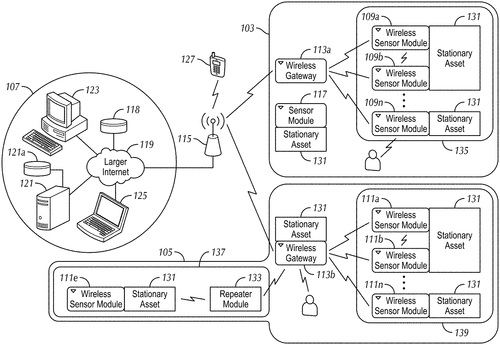
In a recent patent application, an innovative system for monitoring the fill level of a container has been described. The system consists of a wireless module attached to the container's exterior, housing a processor and a wireless transceiver. Connected to this module is a cable, with a pressure sensor affixed to one end inside the enclosure and another pressure sensor on the opposite end outside the container. By inserting the cable into the container, the first pressure sensor resides near the bottom, measuring the pressure within, while the second sensor measures the pressure outside. The real magic begins when these readings are cross-correlated to determine the net pressure, which is then utilized to calculate the fill level of the container. The wireless module ensures that the data is transmitted wirelessly, eliminating the need for manual monitoring and providing real-time fill level updates. While this patent application showcases a promising technology with potential applications in various industries, it's important to consider certain factors before hailing it as the next big thing. Competitor products already exist on the market that rely on different methods to monitor fill levels, such as ultrasonic sensors or weight-based systems. These alternative approaches may offer advantages in terms of cost, accuracy, or ease of implementation. Furthermore, a key consideration is whether this innovative system from the patent application can overcome practical challenges to become a viable product. How well will it function in different container types and sizes? What about the durability of the wireless module and its ability to withstand harsh environmental conditions? These are crucial questions that need to be addressed for it to be truly successful. In spite of these potential hurdles, the system described in this patent application presents an intriguing concept. Imagine the possibilities for industries that rely on accurate fill level data, such as manufacturing, logistics, or waste management. The ability to remotely monitor container levels in real-time could streamline operations, reduce costs, and improve efficiency. So, readers, what do you think? Do you see this system revolutionizing the fill level monitoring industry, or do you have reservations about its feasibility? Let us know in the comments below.
This system monitors a fill level of a container by using pressure sensors attached to the cable. The pressure readings from the sensors are cross-correlated and used to calculate the fill level of the container.
US Patent 11768098
****
Weigh Your Luggage with This New Rack!
What is this invention?
Suitcase weighing luggage rack
A weighing luggage rack so grand,
It had a top and bottom stand.
The platform portion was stacked on top,
For placing items to weigh and plot.
An electronic display would show the weight; it's quite grand!
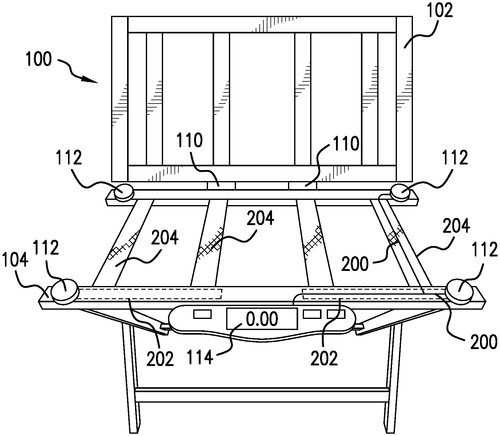
The latest patent filing in the world of travel accessories is a weighing luggage rack. This innovative invention aims to alleviate the hassle of trying to determine the weight of your luggage before heading to the airport. The weighing luggage rack features a unique design, consisting of a rack portion with a top section and a bottom section. Connected to the top section is a platform portion that is stacked on top of the rack portion. This platform is where you place your luggage to be weighed. The real standout feature of this invention is its built-in weighing mechanism. Gone are the days of stepping on bathroom scales while awkwardly holding your suitcase. The weighing luggage rack accurately displays the weight of your luggage on an electronic display, ensuring you stay within the weight limits set by airlines. One can imagine the convenience this invention could bring to frequent travelers. No more last-minute rearranging at the check-in counter or excessive baggage fees due to miscalculations. It could also be useful for home use, allowing individuals to easily weigh various objects without the need for a separate scale. While the concept is intriguing, it remains to be seen if this weighing luggage rack will ever make it into production. As with many patent filings, there is never a guarantee that the invention will become a reality. However, the idea is not entirely novel, as some luggage companies already offer suitcases with integrated weighing systems. Competitors like Samsonite and Delsey have introduced their versions of smart luggage, which incorporate various features like GPS tracking, built-in chargers, and even digital scales. Therefore, the weighing luggage rack would need to offer some unique selling points to compete in this market. The question for the readers is, would you invest in a weighing luggage rack if it were made available for purchase? Does the convenience outweigh the potential added cost or are you content with other existing solutions? Let us know your thoughts in the comments below.
The text describes a weighing luggage rack that includes a rack portion with a top section and a bottom section, and a platform portion connected with the top section of the rack portion. The platform portion is stacked on top of the rack portion, and can be used to weigh an object placed thereon. The weighing luggage rack also includes a weighing mechanism and an electronic display configured to display the weight of an object placed thereon.
US Patent 11768101
****
An Easy Way to Secure Your Fiber-Optic Cables
What is this invention?
Fiber light relay system with quick-connect fiber anchor
An apparatus was made to install,
With an anchor insert tab and a top plate.
ST connector and zip ties,
Extended through the wall's sides,
To form an anchor that won't fail or abate.
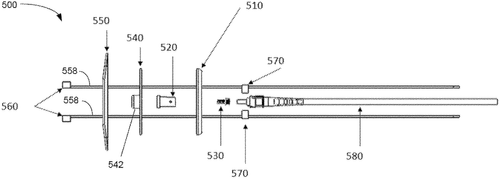
In a recently published patent, an interesting apparatus for forming an anchor to connect a fiber to an explosive charge wall has been described. This invention involves the use of an anchor insert tab, a top plate, an ST connector, zip ties, and locking members to create a secure connection. The anchor insert tab is placed on the interior side of the wall, while the top plate is positioned on the exterior side. The ST connector, which is attached to the top plate, allows for the insertion of a fiber through the wall. Zip ties are then threaded through the anchor insert tab, the wall, and the top plate to provide added reinforcement. Each of these zip ties is equipped with a locking head on the interior side of the wall, ensuring that the anchor insert tab remains firmly pressed against the wall surface. The locking members are engaged with the zip ties to secure the top plate against the exterior wall surface, forming a strong anchor. While this patent showcases a clever solution for connecting fibers to explosive charge walls, it remains to be seen whether this apparatus will ever make its way into a final product. Competing products in this field already exist, offering different methods of connecting fibers to surfaces. Therefore, it will be essential for the inventors to not only prove the effectiveness and efficiency of their design but also to demonstrate its superiority over existing alternatives. Apart from its intended use in explosive charge walls, one can imagine potential applications for this technology in various fields. For instance, it could be employed in construction for securely attaching delicate fiber optic cables to walls. It might also find use in high-tech security systems where the reliability of connections is of paramount importance. The question that arises from this patent is whether the inventors have considered the versatility and scalability of their apparatus. Is it adaptable to different types of walls and surfaces, and can it be used for various purposes beyond its original scope? The potential applications seem promising, but it remains to be seen whether the inventors have optimized their design accordingly. What are your thoughts on this inventive patent? Do you believe this anchor-forming apparatus has the potential to revolutionize the way we make connections in different industries? Share your insights in the comments below.
The apparatus includes an anchor insert tab, a top plate, an ST connector, and a plurality of zip ties. The anchor insert tab is disposed on the interior side of the wall and attached to the top plate. The zip ties extend through the anchor insert tab, the wall, and the top plate. The locking members are engaged with the zip ties to press the top plate against the exterior wall surface to form an anchor.
US Patent 11768117
****
Detecting Bubbles in Liquid Flow with New System
What is this invention?
Bubble detection system and method within a liquid flow of a pipe by sensing changes in local liquid pressure
A pressure sensor was affixed,
To measure the flow of liquid in a pipe.
The microcontroller then did detect,
When bubbles would make it select,
Whether or not they were there to be seen with sight!

In an intriguing new patent application, a system for detecting bubbles within a liquid flowing in the interior of a pipe has been described. The system includes a pressure sensor affixed to the interior of the pipe, along with a microcontroller that communicates with the sensor. The pressure sensor collects pressure readings of the liquid as it flows through the pipe, and these readings are then sent to the microcontroller. By selecting a specific pressure differential range over a certain period of time, the system can determine the presence of bubbles in the liquid. Essentially, if the pressure differential range is exceeded, it indicates the presence of bubbles. This invention has the potential to be valuable in various industries that rely on the transportation of liquids through pipes. For instance, it could be used in the oil and gas industry to detect the presence of gas bubbles in pipelines, which could have safety implications. Similarly, in the pharmaceutical industry, this system could help identify any air bubbles in the liquid transport process, ensuring the integrity of drug formulations. While the concept behind this invention is fascinating, it is important to temper our excitement with the practicalities of turning a patent into a viable product. Many patent applications never see the light of day or may face significant hurdles in development. Considering the market, one might wonder how this system compares to existing bubble detection devices. Are there already similar products available? If so, how does this new invention improve upon or differ from those existing solutions? And finally, could this technology have broader applications beyond bubble detection, potentially leading to further innovations in liquid flow monitoring? We invite you to share your thoughts in the comments below.
The system includes a pressure sensor affixed to the interior of the pipe, and a microcontroller that communicates with the pressure sensor. The pressure sensor gathers pressure readings of the liquid flowing in the pipe at the location of the pressure sensor and sends these readings to the microprocessor. A pressure differential range over a specific period of time is selected which when exceeded, indicates the presence of bubbles in the liquid flowing in the pipe. The microcontroller then uses this information to determine whether or not there are bubbles present in the fluid flowing through the pipe.
US Patent 11768142
International Business Machines Corporation
Printed Circuit Board with Microstrip and Conductive Structure Lets Probe Lead Communicate With Device
What is this invention?
Removable contactless probe
A system with a printed circuit board
Including microstrip, quite adored
Conductive structure around it was found
With probe lead that made the sound
Two contact pads were then discovered
One connected to the other's brother!
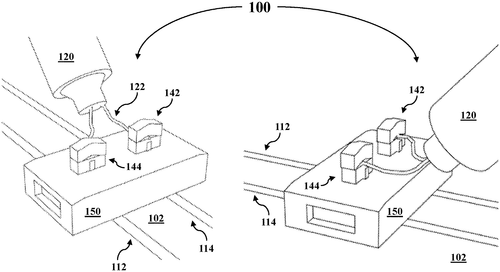
International Business Machines Corporation has recently filed a patent that describes a new system which includes a printed circuit board with a microstrip and a conductive structure surrounding it. This system also incorporates a probe lead that communicates with the conductive structure, as well as two contact pads that are electrically connected to the conductive structure. At first glance, this patent may not seem groundbreaking or particularly exciting. However, it is worth noting that IBM is a renowned company known for pioneering innovative technologies. They have a proven track record of transforming patents into practical products. While the patent does not explicitly mention any specific applications or use cases, there is potential for this system to be utilized in various industries. For example, it could be integrated into the telecommunications sector to improve the performance of signal transmission on circuit boards. Additionally, it could have applications in the automotive industry for enhancing the efficiency of electronic systems. Competitor products, such as those produced by Intel or Qualcomm, typically focus on similar technologies and may already have their own proprietary solutions for circuit board optimization. Therefore, IBM would need to demonstrate the uniqueness and advantages of their system to truly stand out. As with any patent, it remains to be seen whether this system will be developed into an actual product. It is important to remember that not all patented ideas come to fruition, and many factors come into play when deciding which inventions are worth pursuing further. In conclusion, IBM's recently filed patent showcases their ongoing commitment to innovation. While the system described in the patent may not immediately capture the attention of consumers, its potential applications in various industries cannot be overlooked. Whether IBM will turn this patent into a practical product waits to be seen. What potential uses can you imagine for this system? Share your thoughts and ideas in the comments below.
This text describes a system that includes a printed circuit board with microstrip and a conductive structure surrounding the microstrip. The system includes a probe lead in communication with the conductive structure. The system includes two contact pads, one of which is electrically connected to the conductive structure and the other of which is electrically connected to the probe lead.
US Patent 11768225
International Business Machines Corporation
Computer System Optimizes Operational Parameters for Tasks in Response to User Input
What is this invention?
Dynamic assignment of devices based on precision sensors
A computer system was given a mission
To complete tasks with optimized precision
It calculated the value, based on user parameters and details
In response to task completion it moved like sails
The optimized configured parameters were surely its vision!
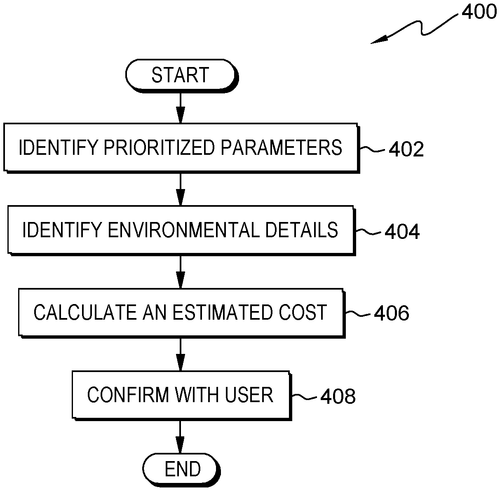
In a recently published patent, International Business Machines Corporation (IBM) outlines an intriguing approach to task optimization using a computer system. The invention claims to optimize operational parameters based on prioritized user parameters and environmental details, ultimately calculating a value for the task and performing it accordingly. While the concept itself sounds promising, it is important to remember that not every patent transforms into a tangible product. In this case, IBM's patent raises some interesting questions about how tasks can be optimized and potentially automated in the future. Currently, numerous competitors offer task management software and applications designed to enhance productivity and streamline workflows. However, IBM's approach aims to take task optimization a step further, by dynamically adapting to user preferences and environmental factors. This could potentially lead to more efficient and personalized task management. Furthermore, considering the increasing prevalence of artificial intelligence (AI) and machine learning (ML) technologies, it is not far-fetched to imagine a future where our devices understand our preferences and optimize tasks accordingly. For instance, imagine a virtual personal assistant that knows your priorities and factors in contextual information, such as weather and traffic conditions, while scheduling and performing tasks autonomously. Although this patent demonstrates IBM's innovative thinking, it remains to be seen if it will eventually materialize into a user-facing product. The implementation of such a system would require significant development and integration efforts, as well as considerations for privacy and data security. As we shift towards an increasingly digitized and interconnected world, it's crucial for businesses to explore novel ways to improve productivity and efficiency. In this regard, IBM's patent opens up a realm of possibilities, but the real question is: How willing are you to entrust your everyday tasks to a computer system? Would you feel more productive or would it make you uneasy? Let us know in the comments below.
In embodiments of the present invention, a computer system is provided with a computer program product and a method. The computer system receives a request for a task to be performed, and optimizes configured operational parameters based on prioritized user parameters and environmental details associated with the task. The computer system calculates a value of the task based, at least in part, the optimized configured parameters, environmental details associated with the task, and prioritized user parameters. And, in response to receiving an indication that the task has been completed, the computer system performs the task based on the optimized configured parameters and calculated value.
US Patent 11768296
International Business Machines Corporation
Touch Sensors Keep Server Racks Running Smoothly
What is this invention?
Data center component replacement
There was a system that had some rack,
With components that would never lack.
Each touch sensor's paired,
To one or more prepared.
A failed component they could track!
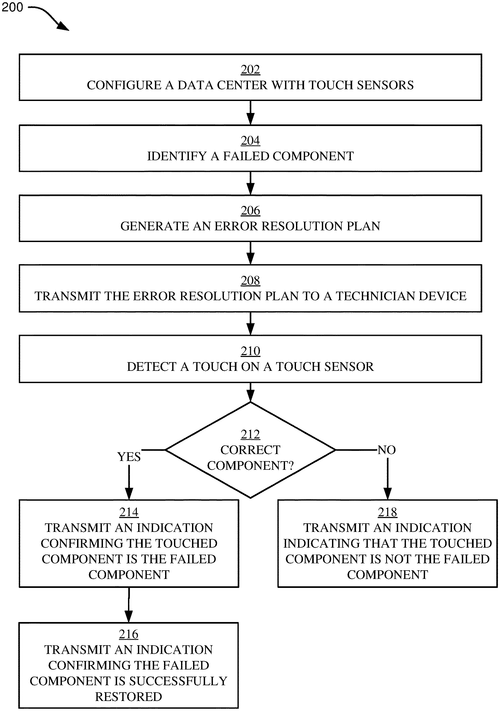
In a recent patent filed by International Business Machines Corporation (IBM), a new system was described that aims to revolutionize server rack management. This innovative system consists of a server rack with multiple components, each equipped with touch sensors. Additionally, a management system is included, which is connected to the server rack and utilizes processors and computer-readable storage media to carry out specific instructions. The method outlined in the patent involves several steps. Firstly, the management system receives information from the server rack regarding any failed components. This crucial data allows administrators to identify and address the problematic elements swiftly. In conjunction with this, the system also receives touch indications from the touch sensors. This enables the management system to determine whether a specific touch sensor is linked to the failed component or if it's unrelated. Finally, the system transmits feedback back to the server rack, indicating the correlation between the touch sensor and the failed component. This patent presents an interesting solution to enhance server rack management, as it offers a more efficient and accurate way of troubleshooting. By integrating touch sensors directly into the components, administrators can quickly pinpoint the exact issue without the need for extensive manual inspection or guesswork. This has the potential to save time, reduce downtime, and increase overall productivity in data centers or large-scale server infrastructures. While the concept outlined in the patent is undoubtedly intriguing, it is important to remember that not all patented inventions make it to the market as actual products. Many factors come into play, such as feasibility, profitability, and market demand. It will be interesting to see if IBM decides to develop and commercialize this particular system in the future. Considering the competitive landscape, there are already existing server rack management solutions, some incorporating touch interfaces and others utilizing sophisticated monitoring systems. The key question here is whether IBM's patent represents a significant improvement over these existing offerings or if it introduces a novel approach that addresses specific pain points. As technology enthusiasts, we should pay close attention to developments in this field and ask ourselves: Do you believe touch-enabled server rack management is the way forward? How might this invention potentially transform the data center industry? Share your thoughts in the comments below.
The system described includes a server rack comprising a plurality of components. Each touch sensor is coupled with one or more of the components of the server rack. The management system is communicatively coupled to the server rack and is configured to receive an indication of a failed component from the server rack and transmit an indication of whether the first touch sensor is coupled to the failed component to the server rack.
US Patent 11768527
International Business Machines Corporation
Simulating the Time to Locate Defined Total File Numbers
What is this invention?
Reducing time to locate and read files within a tape medium
A task to simulate file numbers,
To locate within a division region,
The time for each method must be applied,
And the results then compiled and supplied.
For this task no one needs to deride;
It's all done in a simulated environment!
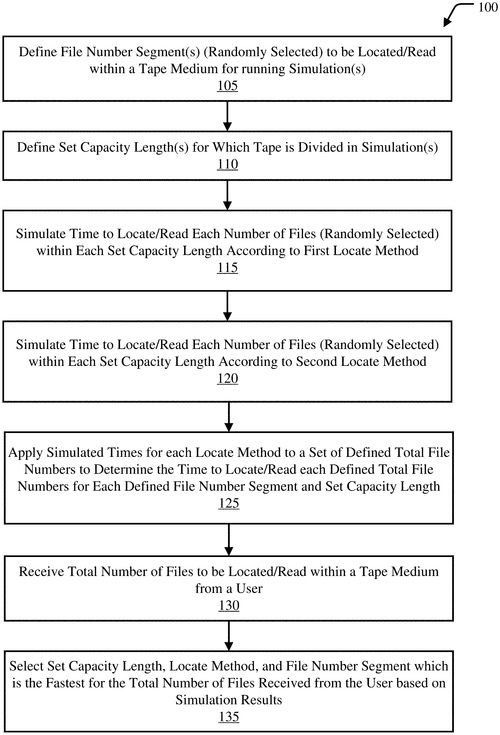
In a recent patent filed by International Business Machines Corporation (IBM), a new system for simulating file number segments and tape division regions has been described. This innovative technology aims to determine the time required to locate different file number segments for various tape division regions, using two different locate methods. By applying simulated times to a set of defined total file numbers, the system can calculate the time needed to locate each file number segment, based on the locate method, file number segment, and tape division region combination. While this patent seems to offer a potentially interesting solution for optimizing file retrieval processes, it is crucial to remember that the existence of a patent does not guarantee that a product will ever come to market. Many filed patents, even from established corporations like IBM, never evolve beyond the conceptual stage. In the realm of file storage and retrieval, there are already established products and solutions available, such as cloud-based systems, solid-state drives (SSDs), and advanced indexing algorithms used by companies like Google. Therefore, it remains to be seen whether IBM's proposed system will offer sufficient advantages over existing technologies to gain traction in the marketplace. In terms of potential applications, this technology could prove advantageous for large organizations or data centers that handle extensive file libraries. By accurately simulating the time required to locate specific file number segments across different tape division regions, administrators could optimize data retrieval processes and improve overall efficiency. However, whether this patent will translate into a finished product and see the light of day is uncertain. The tech industry is rife with innovations that never materialize, and patents alone cannot guarantee real-world implementation. What are your thoughts on this patent? Can you envision any specific scenarios where this technology would be useful? Let us know in the comments below.
The text describes how to simulate the time it takes to locate a file number segment within a simulated environment. The first locate method is used to determine the time to locate file number segments within a tape division region, and the second locate method is used to determine the time to locate file number segments within a specific tape division region. The times for each method are applied to a set of defined total file numbers, and the results are then compiled into a detailed summary.
US Patent 11768604
International Business Machines Corporation
Your Mobile Device Can Now Tell You What's New!
What is this invention?
Dynamic message embedded within application new feature rollout
A user's preference and activity,
And profile information too,
Will be used to embed a message
In the new feature update view.
If accepted it shall appear,
A fun surprise for all to hear!
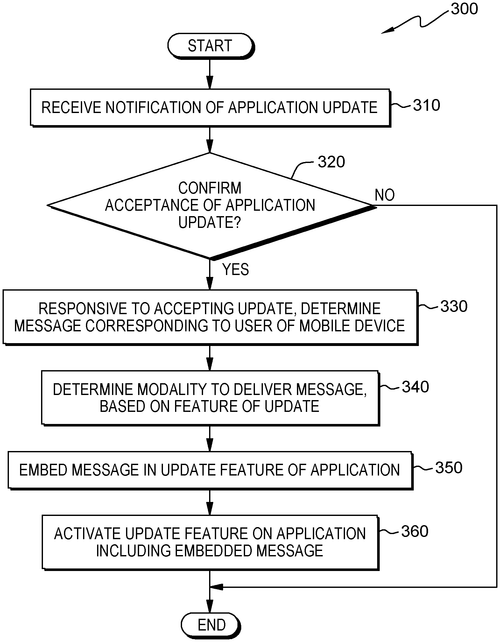
In a recent patent filed by International Business Machines Corporation, they propose a new method for embedding personalized messages within app updates on mobile devices. The patent describes a process where user preferences and activities are compiled, and based on this information, a message is dynamically embedded within a new feature included in the update of an application. The message is selected from a pool of available messages, tailored to the individual user's profile and activity information. On the surface, this invention seems like a way to enhance user engagement and provide a more personalized experience. However, it's important to note that this is just a patent and not an actual product. While IBM is known for its technological advancements, it remains to be seen if this innovative concept will actually see the light of day. Competitors in the mobile app space, such as Apple and Google, constantly strive to improve user experience. Embedding personalized messages within app updates could potentially be a great way to catch people's attention and provide them with relevant information. For example, if a user frequently listens to music on their device, the app update could embed a message about a new feature or playlist that might interest them. But questions arise regarding the intrusive nature of these embedded messages. Will users find them helpful or will they be seen as unwanted advertisements? Privacy concerns surrounding the collection of user preferences and activity information also need to be addressed. As with many patent filings, it's uncertain if this invention will ever become a reality. However, it does open up a discussion about the future of user engagement and personalization in the app space. How do you feel about the idea of receiving personalized messages embedded within app updates? Would you find it helpful or invasive? Share your thoughts in the comments below.
This text describes a process for embedding a message within a new feature included in an update to a first application. The process is based on user preference and activity information, as well as profile and activity information about the first user. If the user accepts installation of the update, the selected message will be embedded within the new feature.
US Patent 11768671
Micron Technology, Inc.
Computing Reduction and Prefix Sum Operations in Memory - Faster, Easier, and More Accurate!
What is this invention?
Computing reduction and prefix sum operations in memory
A clever apparatus was found,
To compute reduction and prefix sum.
It splits the data with ease,
Copying each element to please,
And performs a logical operation for fun!
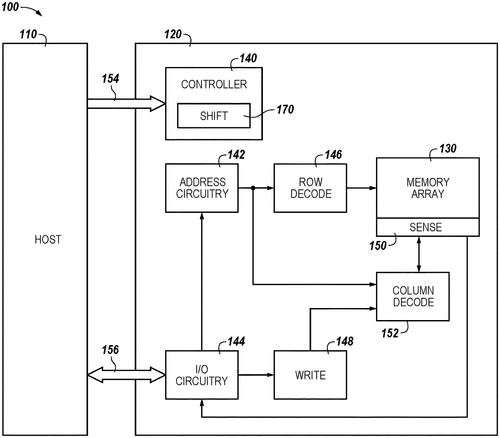
Micron Technology, Inc. has recently filed a patent that could revolutionize computing operations in memory. The patent describes apparatuses and methods for computing reduction and prefix sum operations in memory. While this may sound complex, the concept is actually quite fascinating. According to the patent, Micron's technology involves a unique approach to compute reduction operations on data stored in memory cells. Instead of the traditional method, Micron proposes splitting the data into multiple elements and copying each of these elements into wider copies. Afterward, a logical operation associated with the reduction operation is performed on each of the copied elements. If successfully implemented, this invention could have far-reaching implications in the world of computing. Imagine faster and more efficient data processing, especially when dealing with large datasets. While existing competitor products offer similar functionalities, Micron's patent seems to push the boundaries, potentially giving it a competitive edge. With potential applications in areas like artificial intelligence, big data analytics, and scientific research, Micron's patent holds promise. However, it's important to remember that just because a patent has been filed does not guarantee that it will become a tangible product. Many factors, such as feasibility, practicality, and market demand, will dictate its fate. So, while we eagerly await the realization of Micron's innovation, we have to wonder: Will this patent pave the way for a game-changing product in the computing industry? How will other companies respond to this development? Share your thoughts in the comments below.
The present disclosure includes apparatuses and methods for computing reduction and prefix sum operations in memory. A number of embodiments include processing circuitry configured to compute a reduction operation on data stored in a group of memory cells by splitting the data into a plurality of elements, copying each of the plurality of elements into elements that are wider than before being copied, and performing a logical operation associated with the reduction operation on each of the copied elements.
US Patent 11768600
Micron Technology, Inc.
Multithreaded Memory Access: Apparatuses and Methods Disclosed Here
What is this invention?
Apparatuses and methods for concurrently accessing multiple partitions of a non-volatile memory
A non-volatile memory array,
Was made with a bunch of parts.
Each partition had its own,
For concurrent access to be shown.
To execute commands was smart!
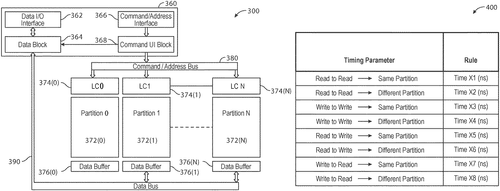
Micron Technology, Inc. has recently filed a patent for an intriguing innovation in memory technology. The patent, titled "Apparatuses and methods for performing multithread, concurrent access of different partitions of a memory," describes a potential solution to enhance memory access capabilities. In simple terms, the patent details an apparatus that consists of a non-volatile memory array with multiple partitions. Each partition comprises a set of memory cells. The apparatus incorporates several local controllers that can independently and simultaneously access their corresponding partition to execute memory access commands. A central controller receives multiple memory access commands and determines the target partition for each command. It then provides the respective memory access commands to the local controller associated with the target partition. On the surface, this patent showcases the potential for parallel processing and improved efficiency in memory access. By allowing multiple local controllers to concurrently access different partitions, the patent hints at reducing latency and enabling faster data retrieval. While promising, it is essential to consider the practical aspects of this patent. Currently, companies like Samsung and Intel dominate the memory market with their proven products. Micron Technology, Inc. will certainly face tough competition if they decide to develop their conceptual apparatus into an actual product. However, if successfully implemented, this technology could find applications in a wide range of industries. From data centers and cloud computing to consumer electronics and mobile devices, the ability to access data from multiple partitions simultaneously could profoundly impact performance and enhance user experiences. But the important question remains: Will Micron Technology, Inc. transform this patent into a tangible product? Share your thoughts and opinions in the comments below. How do you see this innovation shaping the future of memory technology?
This document discloses apparatuses and methods for performing multithread, concurrent access of different partitions of a memory. An example apparatus may include a non-volatile memory array comprising a plurality of partitions. Each partition may include a respective plurality of memory cells. The apparatus may include a plurality of local controllers that each independently and concurrently access the respective one of the plurality of partitions to execute a respective memory access command. The controller may be provide each memory access command to a local controller associated with the target partition determined by the controller.
US Patent 11768603
Micron Technology, Inc.
Solid State Drive with Drive Aggregator - Ready to Take on the World
What is this invention?
Aggregation and virtualization of solid state drives
A solid state drive described with care,
Had a drive aggregator to pair.
It could receive commands from the host system,
Then transmit them on down the line 'em.
The patent was quite grand and so rare!

Micron Technology, a leading innovator in the field of solid-state drives (SSD), has recently filed a patent showcasing a revolutionary advancement in storage technology. This patent describes a new SSD design that incorporates a drive aggregator, allowing it to interface seamlessly with a host system while utilizing multiple component SSDs. In simple terms, this means that the drive aggregator acts as the main communication hub between the SSD and the host system. By connecting multiple component SSDs to the drive aggregator, each with its own controller capable of processing commands from the host system, Micron Technology has potentially revolutionized the way SSDs can handle data. Currently, SSDs are designed as standalone units, with a single controller responsible for processing all the data. This new patent could potentially allow for a distributed processing system, where the drive aggregator delegates commands to be processed simultaneously by multiple component SSDs. This has the potential to greatly improve data transfer speeds and overall performance. While this patent is incredibly exciting and points to a promising future for SSD technology, it is important to keep in mind that not all patented innovations make it to market. Companies like Micron Technology often file numerous patents as a means of protecting their intellectual property and staying ahead of the competition. Speaking of competition, well-established players in the market, such as Samsung and Western Digital, already offer high-performance SSDs with impressive speed and capacity. If Micron Technology can successfully bring this patent to life, it could give them a significant advantage in the ever-evolving SSD market. The potential applications for this technology are vast. It could be especially beneficial in data centers or high-performance computing environments, where speed and reliability are paramount. By leveraging the power of multiple component SSDs, this patent could lead to breakthroughs in areas such as artificial intelligence, big data processing, and real-time analytics. However, as with any groundbreaking technology, there are still many questions that remain unanswered. Will this patent actually translate into a commercially viable product? And if so, how will it perform in real-world scenarios? Only time will tell. In the comments below, let us know your thoughts on this patent. Do you think this new SSD design has the potential to revolutionize the storage industry? What other applications could you imagine for this technology?
The solid state drive described in this patent has a drive aggregator that interfaces with a host system. The drive aggregator is configured to receive commands from the host system and transmit commands to the component solid state drives to implement the commands received from the host system.
US Patent 11768613
Micron Technology, Inc.
Orchestrating storage device operations with computing devices
What is this invention?
Storage device operation orchestration
A controller of systems so grand,
Can orchestrate storage devices and land.
Data blocks it can request,
With operations to invest,
It's a tool that's truly quite grand!
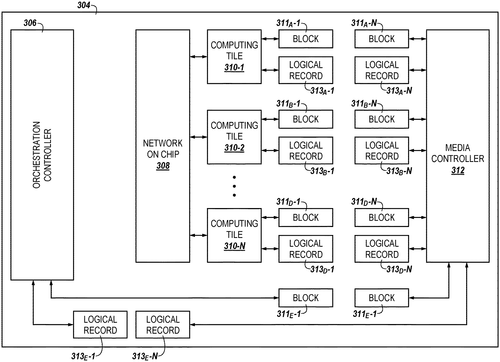
Micron Technology, Inc. has recently filed a patent for a system called "Storage Device Operation Orchestration." This innovative technology involves a controller, referred to as an "orchestration controller," which can be connected to a plurality of computing devices and an interface. The main function of the controller is to manage the operation of these computing devices. According to the patent, the controller includes circuitry that enables it to request a block of data from a memory device connected to the system. It can further instruct at least one computing device to perform an operation on the data block, which may involve ordering, reordering, removing, or discarding certain portions of the data. After these operations are completed, the controller then transfers the modified data block to the interface, which is connected to the multiple computing devices. Considering the complexity of the patent description, it is not immediately clear how this technology could manifest in a consumer product. However, it seems to offer potential for enhancing data processing and storage capabilities in large-scale computing environments. While the patent does not mention any specific competitors, there are already plenty of storage and data processing technologies available in the market. For this new invention to stand out, it will be crucial for Micron Technology, Inc. to demonstrate practical applications and advantages over existing solutions. One potential use case that comes to mind is the management of large-scale data centers. With the increasing demand for cloud computing and big data processing, a system like this could optimize data movement and improve overall efficiency in these environments. Moreover, it might also find applications in fields such as artificial intelligence or scientific computing, where vast amounts of data need to be processed and analyzed rapidly. It remains to be seen whether Micron Technology, Inc. will successfully transform this patent into a marketable product. However, the concept itself raises interesting possibilities for improving data storage and processing efficiency. What do you think about this new patent from Micron Technology, Inc.? How do you envision this technology being used in real-world scenarios? Share your thoughts in the comments below!
This text describes systems, apparatuses, and methods for storage device operation orchestration. A controller can control the operation of a plurality of computing devices by requesting a block of data from a memory device coupled to the apparatus, performing an operation on the block of data in which at least some of the data is ordered, reordered, removed, or discarded, and transferring the block of data to an interface coupled to the plurality of computing devices.
US Patent 11768614
Micron Technology, Inc.
Adaptive Memory Management Based on Temperature
What is this invention?
Temperature-based media management for memory components
A system component was configured so,
To manage media based on the snow.
Write temperature and threshold,
The controller can hold,
Adaptive media management to show!
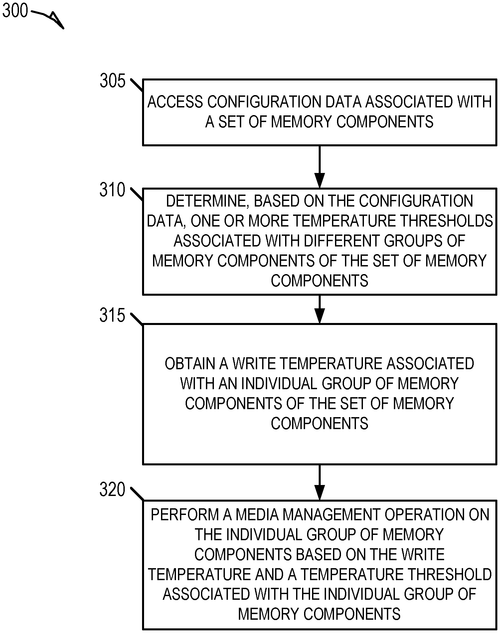
In a recent patent filed by Micron Technology, Inc., they propose a groundbreaking system component that could revolutionize memory management. This new invention aims to enhance the performance and durability of memory components by adapting media management based on temperature-related capabilities. According to the patent, a memory sub-system controller would be configured to analyze the write temperature of each individual group of memory components. By comparing this temperature to a pre-defined threshold, the controller would determine the best media management operation to improve the memory's performance and prolong its lifespan. While the technical aspect of this invention is fascinating, it remains to be seen how practical it will be in real-world applications. Micron Technology will undoubtedly face competition from other players in the memory industry, such as Samsung or Western Digital, who are constantly trying to outdo each other with their innovative products. Nevertheless, if this patent becomes a tangible product, it could have a wide range of applications. From high-performance computing to data centers, adaptive media management could optimize memory usage and prevent overheating issues. This, in turn, could lead to increased reliability and efficiency in various industries. However, we must always remember that many patents do not materialize into real-world products. It remains to be seen if Micron Technology will take this idea from the conceptual stage to the production line. In light of this, the question arises: Will adaptive media management be the next big thing in memory technology? Will it be embraced across industries or face significant obstacles in its implementation? Share your thoughts and opinions in the comments below.
The present disclosure configures a system component, such as a memory sub-system controller, to provide adaptive media management based on temperature-related memory component capabilities. The controller can obtain a write temperature associated with an individual group of memory components. Based on the write temperature and a temperature threshold associated with the individual group of memory components, the controller can select an individual media management operation to perform.
US Patent 11768615
Microsoft Technology Licensing, LLC
A HINGE FOR A FOLDABLE ELECTRONIC DEVICE INCLUDES A SPINE, A FIRST HINGE GUIDE, A SECOND HINGE GUIDE, AND A DISPLAY SUPPORT.
What is this invention?
Electronic device hinge with movable rigid display support
A hinge for a device that's foldable
Includes a spine, and two guides to hold stable.
The display support is connected so well
To the first and second tracks, it won't fail.
Its position relative to the spine can be seen
With just one look at its rotational scene!
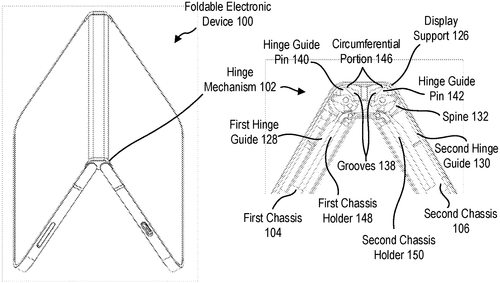
In a recent patent application, Microsoft has described a potentially groundbreaking hinge mechanism for foldable electronic devices. The patent outlines a design that includes a spine, two hinge guides, and a display support, all working together to enable seamless folding and unfolding of the device. The first hinge guide is connected to the spine and can rotate around a first axis, while the second hinge guide is connected to the spine and can rotate around a second axis. The display support is connected to the first hinge guide through a first track and to the second hinge guide through a second track. By manipulating the rotational positions of the hinge guides, the translational position of the display support in relation to the spine can be adjusted accordingly. While this patent offers an intriguing concept, it's important to note that it is still just an idea on paper. Similar hinge mechanisms have been implemented by Microsoft's competitors in various products, such as the Samsung Galaxy Fold or the Lenovo ThinkPa. d X1 Fold. However, many of these existing devices have faced challenges in terms of durability and practicality, making it crucial to assess whether Microsoft's patented design can overcome these hurdles. If this hinge technology were to be successfully implemented into foldable electronic devices, it could revolutionize the way we interact with our gadgets. Imagine a tablet that seamlessly folds into a compact size, easily fitting in your pocket. Or picture a smartphone that expands into a larger screen, offering enhanced productivity and display capabilities. The potential applications for this hinge mechanism are vast and could redefine the landscape of portable technology. As always, patents are no guarantee that a product will actually make it to market. In an industry where innovation often outpaces implementation, it remains to be seen if Microsoft's ambitious hinge design will materialize into a viable commercial product. However, the prospect of foldable devices becoming more accessible and user-friendly is undoubtedly exciting. What are your thoughts on foldable electronic devices? Have you tried any existing models, and do you believe Microsoft's patent could address the current limitations? Share your opinions and experiences in the comments below.
The hinge for a foldable electronic device includes a spine, first and second hinge guides, and a display support. The first hinge guide is rotatably connected to the spine around a first axis. The second hinge guide rotatably connected to the spine around a second axis. The display support is connected to the first hinge guide in a first track and connected to the second hinge guide by a second track. A translational position of the display support relative to the spine is related to a first rotational position of the first hinge guide relative to the spine and a second rotational position of the second hinge guide relative to the spine.
US Patent 11768524
Microsoft Technology Licensing, LLC
Computing Devices and Methods for Adjusting a Driving Signal for a Haptic Trackpad
What is this invention?
Computing device with haptic trackpad
A haptic trackpad with a drive,
Its acceleration can be adjusted to thrive.
The user experience will be more precise,
And the responsiveness will increase.
For such control we are truly alive!
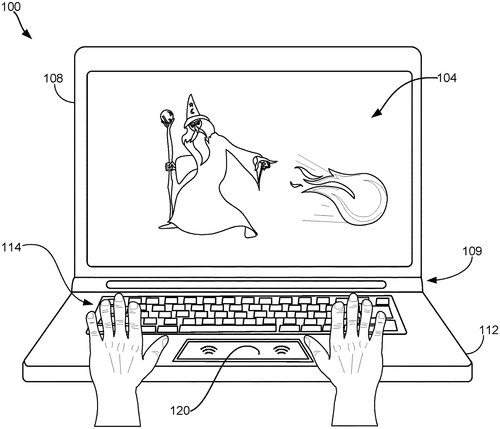
Innovation in the world of computing devices is no longer limited to the screen or the operating system; it has now expanded to the trackpad itself. Microsoft Technology Licensing, LLC has recently patented a fascinating technology that aims to enhance the haptic feedback experience on trackpads. The patent describes a computing device that utilizes a printed circuit board trackpad, an accelerometer, and a haptic actuator. The purpose is to adjust the driving signal for the haptic actuator based on various factors such as trackpad acceleration and target acceleration. By measuring the acceleration variance between the actual acceleration and the desired acceleration, the device is able to fine-tune the driving signal to deliver a more precise and tailored haptic experience. Although this patent is exciting on paper, it raises the question of whether it will translate into a practical product. Many competitors already offer haptic feedback in their trackpads, such as Apple's Force Touch and Google's Pixelbook Pen. Will Microsoft's technology provide a significant improvement over these existing options? Is there a demand for this level of customization and precision in trackpad feedback? Potential applications for this technology could include improved touch sensitivity and accuracy for graphic designers, architects, or anyone working with precise movements on trackpads. It could also enhance immersive experiences in gaming by providing more nuanced haptic feedback. However, it remains to be seen whether Microsoft will pursue bringing this patent to life in a consumer product. Will they seize the opportunity to revolutionize the trackpad experience or let the concept remain a mere theoretical innovation? What are your thoughts on this patent? Do you believe there is a need for such advanced haptic feedback in trackpads? Share your insights and opinions in the comments below.
The disclosed computing devices and methods for adjusting a driving signal for a haptic trackpad may be used to adjust the haptic actuator's driving signal in order to produce different acceleration levels on the trackpad. This may allow more accurate control of the user's experience when using the trackpad, as well as improve overall responsiveness of the device.
US Patent 11768542
Microsoft Technology Licensing, LLC
Gesture input evaluation with improved accuracy
What is this invention?
Gesture recognition based on likelihood of interaction
A method for evaluating gesture input,
Involves tracking hands of a user bit;
With neural networks trained to recognize features,
We can detect when gestures occur with ease;
And thus adjust parameters to ensure.
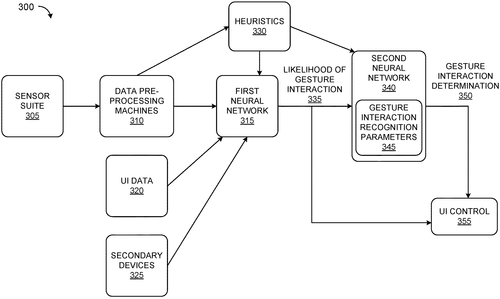
Microsoft has recently patented a method for evaluating gesture input using neural networks. This patent describes a technology that would allow devices to recognize and analyze hand movements, potentially enabling a more intuitive and immersive user experience. The method involves receiving input data for sequential data frames, including hand tracking data for the user's hands. The system uses a first neural network to recognize features that indicate subsequent gesture interactions, evaluating the input data for a sequence of data frames. This neural network outputs an indication of the likelihood of the user performing gesture interactions during a specific window of data frames. To further enhance gesture recognition, a second neural network is employed. This network is trained to recognize features that indicate whether the user is currently performing one or more gesture interactions. Based on the indicated likelihood from the first neural network, the second neural network adjusts parameters for gesture interaction recognition within the predetermined window. It then evaluates the data frames within that window for performed gesture interactions and outputs a signal indicating whether the user is engaged in any gesture interactions during that time. While the technology described in this patent is intriguing and certainly has the potential to enhance user interactions, it is important to consider how it will translate into actual products. Although there have been advancements in gesture recognition technology, many consumer devices currently on the market have not fully embraced gesture-based interaction. Companies like Apple with their Touch ID and Face ID, and Google with their voice commands, have focused more on other input methods. So, the question remains: Will Microsoft's gesture recognition method find its place in the mainstream consumer market? Let us know your thoughts in the comments below.
This article describes a method for evaluating gesture input, which includes receiving input data for sequential data frames, including hand tracking data for hands of a user. A first neural network is trained to recognize features indicative of subsequent gesture interactions and configured to evaluate input data for a sequence of data frames and to output an indication of a likelihood of the user performing gesture interactions during a predetermined window of data frames. A second neural network is trained to recognize features indicative of whether the user is currently performing one or more gesture interactions and configured to adjust parameters for gesture interaction recognition during the predetermined window based on the indicated likelihood. The second neural network evaluates the predetermined window for performed gesture interactions based on the adjusted parameters, and outputs a signal as to whether the user is performing one or more gesture interactions during the predetermined window.
US Patent 11768544
Microsoft Technology Licensing, LLC
Efficient Management of Local Branch History Registers
What is this invention?
Methods and circuitry for efficient management of local branch history registers
A local branch history register
Is managed with efficiency by this paper;
The processor has a pipeline,
With bit-vectors that are fine,
And the branch predictor sets bits to track its caper.
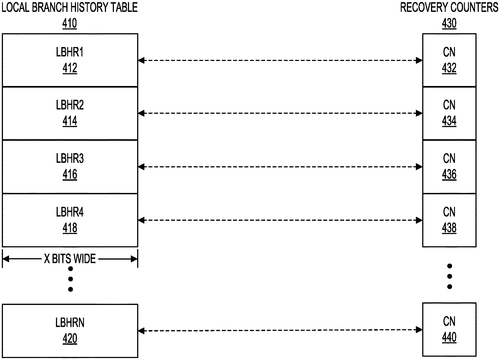
Microsoft Technology Licensing, LLC has recently filed a patent for methods and circuitry aimed at efficiently managing local branch history registers in processors. While this may sound like a highly technical and somewhat esoteric concept, it actually holds great potential for enhancing the performance of future computing devices. In simple terms, this patent proposes a solution to improve the accuracy and efficiency of branch prediction, which is a crucial aspect of modern processor design. Branch prediction involves guessing the outcome of conditional statements or branches in software code, thereby enabling processors to streamline their operations and execute instructions more quickly. The patent describes a novel approach where each branch in a software program is associated with a bit-vector and a recovery counter. The bit-vector indicates whether a local branch history register has been updated, and the recovery counter keeps track of the number of bits that need recovery before the register can be considered accurate for branch prediction. By utilizing this new method, the branch predictor circuitry can respond more effectively to updates in local branch history registers. Furthermore, in the event of a "flush," which refers to the discarding of instructions in the pipeline, the proposed circuitry can determine the recovery needed for each affected register, setting the appropriate recovery counters accordingly. While this patent showcases Microsoft's commitment to advancing processor design, it is essential to remember that not all patented technologies necessarily find their way into consumer products. Many ideas are developed and patented as part of a company's research and development efforts, with only a fraction seeing the light of day as commercial products. However, if implemented successfully, this innovation could have a significant impact on the efficiency and overall performance of processors. Faster and more accurate branch prediction can not only enhance the responsiveness of software applications but also lead to energy savings and improved battery life. Just imagine a future where your laptop or smartphone can execute tasks even more swiftly, seamlessly transitioning between different functions without missing a beat. It could revolutionize the way we interact with our devices and pave the way for new possibilities in areas such as artificial intelligence, gaming, and data processing. So, what are your thoughts on this patent? Do you believe Microsoft's proposed method for managing local branch history registers will make its way into commercial products? Share your insights and opinions in the comments below.
This paper describes methods and circuitry for efficient management of local branch history registers. An example processor includes a pipeline comprising a plurality of stages, and a bit-vector associated with each in-flight branch associated with the pipeline. The processor includes a recovery counter for tracking a number of bits needing recovery before a local branch history register is valid for participation in branch prediction. The processor also includes branch predictor circuitry configured to, in response to an update of a local branch history register by a branch, set a bit in the corresponding bit-vector indicative of the update of the local branch history register. The Branch predictor circuitry is configured to, upon flush, determine value indicative of an extent of recovery required for each local branches affected by the flush and set corresponding recovery counters accordingly.
US Patent 11768688
Intel Corporation
New Integrated Circuit Allows for Multiplication in Just Seconds
What is this invention?
Efficient logic blocks architectures for dense mapping of multipliers
A logic block with lookup tables,
To multiply two numbers it enables.
The adding circuitry then adds the first set,
With one or more partial products to offset.
It all works in an integrated circuit!
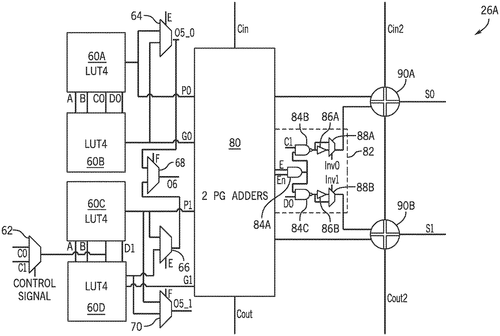
Intel Corporation has recently filed a patent for an integrated circuit that boasts a unique logic block designed specifically for multiplication operations. This innovative technology incorporates multiple lookup tables, adding circuitry, and specialized circuitry to generate various outputs. One potential application for this integrated circuit could be in high-performance computing systems, where the ability to quickly and efficiently perform multiplication operations is crucial. By leveraging the power of lookup tables and adding circuitry, Intel's invention could potentially improve the speed and accuracy of complex calculations in these systems. While this patent demonstrates Intel's commitment to pushing the boundaries of integrated circuit technology, it remains to be seen whether this particular invention will evolve into a commercially available product. The market is already saturated with competing products from other semiconductor companies, such as AMD and NVIDIA, each vying for dominance in the high-performance computing sector. Nevertheless, Intel's patent highlights the ongoing efforts within the industry to create more efficient and powerful integrated circuits. As technology continues to advance, it is exciting to witness the constant innovation occurring in this field. The question that arises from this patent is whether these advancements will translate into tangible products that benefit consumers or remain confined to R&D laboratories. Only time will tell. What do you think about Intel's patent for this multiplication-focused logic block? Do you believe it has the potential to revolutionize computing, or is it just another incremental improvement? Let us know in the comments below!
The text describes an integrated circuit that includes a logic block configured to multiply two numbers. The logic block includes lookup tables that receive the two numbers and generate a first plurality of outputs. Additionally, the logic block includes adding circuitry that receives the first plurality of outputs and generates a second plurality of outputs. Finally, the logic block includes circuitry that receives a portion of the two numbers and determines one or more partial products.
US Patent 11768661
Intel Corporation
Delaying Execution to Supervise a Front End Event Delivers Optimal Performance
What is this invention?
Instruction and logic for tracking fetch performance bottlenecks
A processor with a front end,
An execution unit to attend,
Retirement stage and counter too,
Performance monitoring view;
It'll delay instructions when sent!
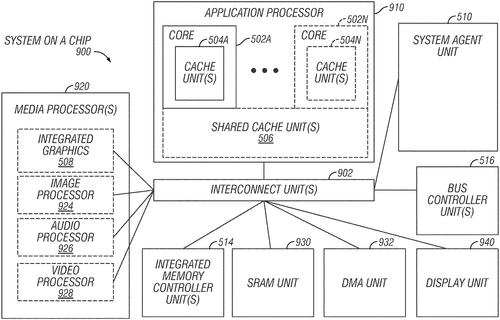
Intel Corporation has recently filed a patent for a new processor that promises to enhance performance monitoring and improve the execution of instructions. The patent describes a processor with a front end, an execution unit, a retirement stage, a counter, and a performance monitoring unit. One interesting feature of this processor is its ability to supervise events in the front end that may cause delays in the execution of instructions. By receiving an event instruction, the front end becomes equipped to handle potential delays more effectively. Furthermore, the execution unit can set a register with parameters that enable better supervision of these front end events. Another noteworthy aspect of this invention is its ability to match candidate instructions to front end events. This means that the processor can intelligently categorize and prioritize instructions based on the associated front end events. The counter within the processor is then responsible for generating the front end event once the candidate instruction has successfully retired. While this patent showcases promising advancements in processor technology, it is essential to remember that not all patented ideas translate into practical products. However, if successfully implemented, this processor could potentially revolutionize performance monitoring and execution efficiency. It is worth considering the current landscape of competitor products. How does this patent compare to existing processors? Are there any potential use cases you can envision for this technology? Share your thoughts and insights in the comments below.
This processor includes a front end, an execution unit, a retirement stage, a counter, and a performance monitoring unit. The front end includes logic to receive an event instruction to enable supervision of a front end event that will delay execution of instructions. The execution unit includes logic to set a register with parameters for supervision of the front end event. The front end further includes logic to receive a candidate instruction and match the candidate instruction to the front end event. The counter then generates the event upon retirement of the candidate instruction.
US Patent 11768683
Intel Corporation
Thread Scheduler Helps Maximize Performance
What is this invention?
Scheduling of threads for execution utilizing load balancing of thread groups
The apparatus had logic that stored,
Data of barrier usage it recorded.
The scheduler was wise,
To use the data to advise,
Threads across multiple processors accorded.
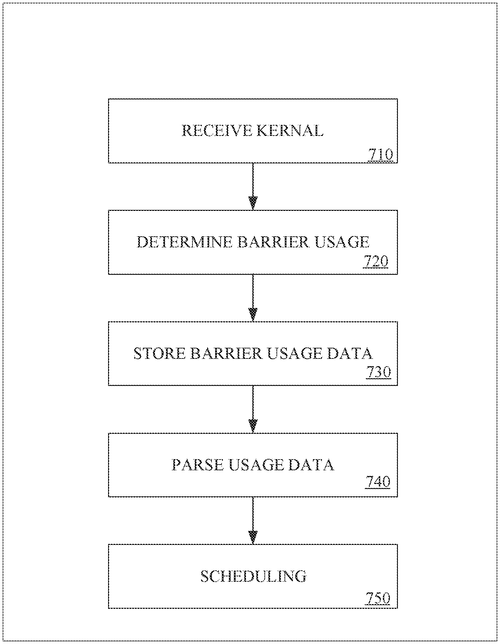
Intel Corporation has recently filed a patent for a fascinating new apparatus designed to revolutionize thread scheduling. The patent outlines an intriguing device with the potential to improve the efficiency and performance of multiprocessor systems. If successfully implemented, this innovation could have wide-ranging implications for various fields that heavily rely on parallel computing. One key aspect highlighted in the patent is the inclusion of logic to store barrier usage data. This data is generated based on the number of barrier messages within an application kernel. By utilizing this information, the apparatus's scheduler can then make informed decisions when it comes to executing threads across multiple processors. Thread scheduling is a vital process for achieving optimal performance in multiprocessor systems. Currently, several companies offer solutions to address this issue, including AMD with its Zen architecture and NVIDIA's CUDA technology. However, Intel's patent proposes a unique approach that, if realized, could potentially revolutionize this field. The potential applications for this apparatus are numerous. It could greatly benefit distributed computing systems such as data centers, where multi-core processors are already widely used. Additionally, it could enhance the efficiency of computational simulations in fields like scientific research, weather forecasting, and artificial intelligence. While the patent provides an exciting glimpse into the possibilities this new apparatus holds, it's important to note that patents aren't always a guarantee of a finished product. Many innovative ideas never see the light of day due to various reasons, including technical challenges, market demand, or competition from rival companies. Nevertheless, the concept outlined in this patent is undeniably intriguing, and it will be interesting to see if Intel can bring it to fruition. Do you believe this new thread scheduling apparatus has the potential to revolutionize the way we approach parallel computing? Share your thoughts in the comments below.
The apparatus includes logic to store barrier usage data based on a magnitude of barrier messages in an application kernel. The scheduler uses the data to schedule execution of threads across a plurality of multiprocessors.
US Patent 11768687
Intel Corporation
Edge Computing Device Accesses and Selects Local or Remote Acceleration Resources for Faster Processing
What is this invention?
Automatic localization of acceleration in edge computing environments
There was an edge computing device,
Able to access local or remote resource.
It could pick the best use,
For time and cost to reduce,
By assessing both with due diligence.
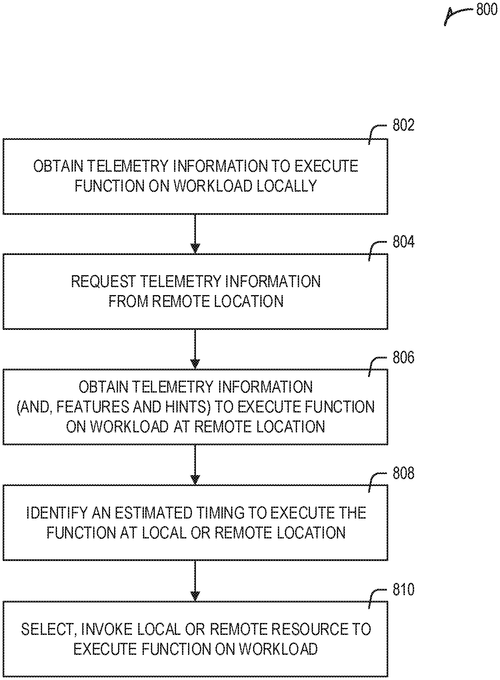
Intel is at it again with another patent that promises to revolutionize edge computing. The patent, titled "Methods, Apparatus, Systems, and Machine-Readable Storage Media of an Edge Computing Device Which is Enabled to Access and Select the Use of Local or Remote Acceleration Resources for Edge Computing Processing," outlines a system that allows an edge computing device to make smart decisions about which acceleration resources to utilize. The concept behind the patent is simple yet groundbreaking. The edge computing device collects telemetry information about the availability of local and remote acceleration resources. It then calculates the estimated time and other factors, such as cost and service level agreements, to determine whether to use the local acceleration circuitry or the remote acceleration function. This technology has the potential to significantly enhance the performance and efficiency of edge computing devices. By dynamically selecting the most suitable acceleration resource, tasks can be executed in a manner that minimizes latency and maximizes cost-effectiveness. Imagine a device that can seamlessly switch between utilizing its own built-in resources and tapping into high-performance remote servers, all while considering factors like time and cost. While the patent is undoubtedly exciting, it's important to note that not all patented technologies make their way into commercial products. Intel is well-known for its innovative research, but practicality and market demand also play a significant role in shaping the future of these inventions. Competitors such as Nvidia and AMD have been making strides in edge computing and optimization technology for years. Whether Intel's patent will make a significant impact in this highly competitive field remains to be seen. However, the potential applications of this technology are vast, ranging from autonomous vehicles to smart homes and everything in between. As always, we'd love to hear your thoughts. Do you think Intel's patent has the potential to become a game-changer in edge computing? Can you imagine other unique use cases for this technology? Let us know in the comments below!
The edge computing device can access and select the use of local or remote acceleration resources for edge computing processing. The first telemetry information indicates availability of local acceleration circuitry to execute a function, while the second telemetry indicates availability of a remote acceleration function to execute the function. The estimated time (and cost or other identifiable or estimateable considerations) to execute the function at the respective location is identified. Based on this information, the edge computing device can select either the use of the local acceleration circuitry or the remote acceleration resource.
US Patent 11768705
Samsung Electronics Co., Ltd.
AI device displays additional information in addition to main content
What is this invention?
Device having a display and control method for obtaining output layout of information on the display
A device was disclosed with glee,
With memory, display and AI.
The processor could control the device to be,
And output a UI screen for you to see.
Time info and extra data made it complete!
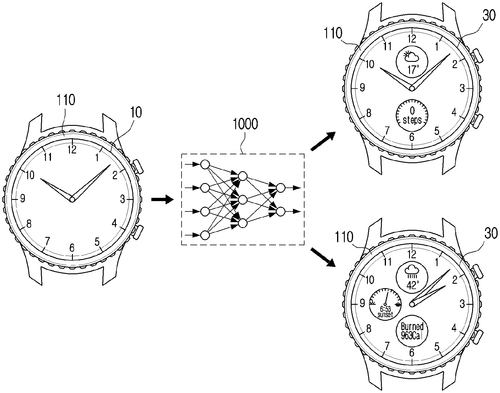
Samsung Electronics Co., Ltd. has recently filed a patent for a device that aims to enhance user experience by intelligently arranging additional information on a user interface screen. The device includes a display, a memory, and a processor equipped with an artificial intelligence model. According to the patent, the processor would be responsible for controlling the device and obtaining output layout information of additional information based on a selected output layout of the main information. The processor accomplishes this by inputting information related to the main information's output layout into the artificial intelligence model. Once obtained, the processor then controls the display to output a user interface screen that incorporates both the time information and additional information, based on the output layout information. While this patent showcases Samsung's efforts to improve user interfaces by leveraging artificial intelligence, it is important to bear in mind that filing a patent does not guarantee a product will be developed. Competitors such as Apple and Google have been investing in similar areas, with features like widget customization and smart suggestions already present on their respective platforms. If brought to life, this technology could potentially have various applications. For instance, it may allow users to personalize their user interface screens by automatically arranging relevant and context-based additional information, such as upcoming appointments, weather updates, or social media notifications. By streamlining the presentation of information, users could potentially save time and have a more streamlined digital experience. However, as exciting as this patent may sound, the practicality and execution of such a device will be crucial in determining its success. How would users react to this level of automation in their user interfaces? Would they find it helpful or overwhelming? What factors should be considered to strike the right balance of automation and user control? These questions, among others, invite further discussion and insights. What are your thoughts on this patent? Do you believe that such a device could enhance your user experience, or do you prefer to have full control over how information is organized on your device's screen? Let us know in the comments below.
The device disclosed includes a display, a memory configured to store an artificial intelligence model trained to obtain an output layout information of an additional information provided in the device, and a processor connected to the display and the memory. The processor is configured to control the device, and obtain, based on an output layout of the main information provided in the device being selected, an output layout information of the additional information by inputting information related to an output layout of a main information to the artificial intelligence model. The processor is also configured to control the display to output a user interface (UI) screen including time information and additional information based on an output layout of the main information and an output layout information of the additional information.
US Patent 11768598
Samsung Electronics Co., Ltd.
System Includes Thousands of Storage Processing Accelerators to Speed Up Data Processing
What is this invention?
System and method for accelerated data processing in SSDS
A system with a plurality of SPAs
Had at least one that had an array
Of programmable processors, n in total
Where the output of each was sent to the next in sequential
The acceleration platform manager controlled it all along!
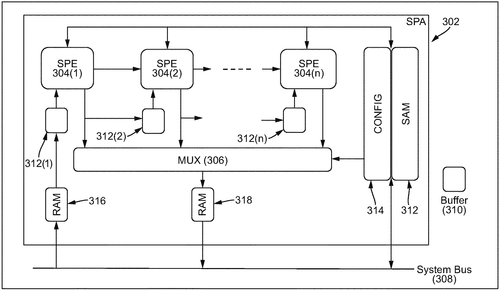
Samsung Electronics has recently filed a patent for a new system that aims to boost storage processing capabilities. The system, described as a plurality of storage processing accelerators (SPAs), incorporates programmable processors or storage processing engines (SPEs) to enhance data processing. This patent introduces n SPEs, where "n" represents a natural number greater than zero. The system operates in a pipeline fashion, with the output of each SPE being passed to the next SPE in the sequence. While the patent details the technical aspects of the system, it leaves room for speculation regarding its practical application. It is worth noting that Samsung's competitors in the storage processing market, such as Intel and AMD, have also been working on similar technologies to improve data processing speeds. Thus, the potential uses for this system may range from data centers and cloud computing to high-performance computing and artificial intelligence. However, as with any patent filing, it is uncertain whether this innovative system will make its way into a marketable product. The patent filing indicates Samsung's intent to explore this avenue of technology, yet it remains to be seen if it will become a reality. In the ever-evolving landscape of technology, what other industries or fields could benefit from a system like Samsung's plurality of storage processing accelerators? Share your thoughts in the comments below.
The system includes a plurality of storage processing accelerators (SPAs), at least one SPA of the plurality of SPAs including a plurality of programmable processors or storage processing engines (SPEs). The plurality of SPEs include n SPEs (n is a natural number greater than zero), where 1st to (n−1) SPEs of the n SPES are configured to provide an output of the SPE to a next SPE in a pipeline to be used as an input of the next SPE. The acceleration platform manager (APM) is connected to the plurality of the SPAs and the plurality of SPEs, and is configured to control data processing in the plurality of SpAs. and the plurality of SPEs.
US Patent 11768601
Samsung Electronics Co., Ltd.
USB Type-C Connector Provides Audio Output Device Access
What is this invention?
Electronic device and method for recognizing audio output device connected to USB type-C connector
An electronic device had a USB Type-C port,
For the processor to connect and report.
It would get first info from an audio output,
And send it back through the USB route.
Then when it got more data in doubt,
The interface was activated with no need to shout!
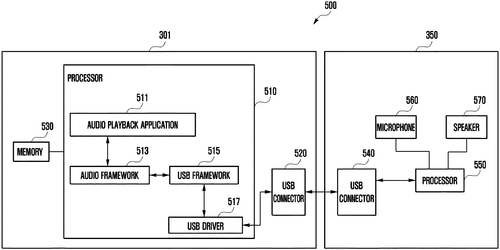
The recently disclosed patent from Samsung Electronics Co., Ltd. hints at a potential innovation in the world of electronic devices. This patent describes an electronic device with a USB Type-C connector that includes a configuration channel (CC) pin and a processor connected to the connector. The processor is designed to obtain information about a connected audio output device, transmit this information to an audio framework through a USB framework, and control the audio framework to access the corresponding interface. This invention seems to address the challenge of seamlessly integrating audio output devices with electronic devices. By utilizing the USB Type-C connector and a dedicated processor, it aims to simplify the process of connecting and accessing audio output devices. While the patent is not specific about the types of devices or interfaces involved, it does suggest that users will be able to activate and access certain interfaces by transmitting information between the USB framework and the audio framework. Competitors in the audio industry, such as Apple or Sony, have already introduced their own solutions to improve audio connectivity. For instance, Apple's AirPo. ds seamlessly connect to iPh. ones through Bluetooth, while Sony's WF-1000XM4 earbuds integrate advanced noise-canceling technology. It will be interesting to see how Samsung's potential implementation compares to these existing products, particularly in terms of user-friendliness and performance. Assuming this patent turns into a marketable product, the potential applications are numerous. It could bring enhanced audio connectivity to smartphones, tablets, computers, gaming consoles, and even home entertainment systems. Users would no longer need to deal with a tangle of wires or struggle with pairing and configuring their audio devices. Instead, they would simply need to connect their audio output device to the electronic device's USB Type-C connector, and the processing unit would take care of the rest. While this patent is intriguing, it is important to note that not all patented technologies make it to the market as consumer products. The current invention remains in the conceptual stage, and it is uncertain whether Samsung will fully develop and commercialize it. However, the concept itself is worth exploring, as it has the potential to simplify and improve audio connectivity in a wide range of devices. With that in mind, we would love to hear your thoughts on this patent. Do you believe that enhanced audio connectivity is a valuable innovation, or do you find existing solutions satisfactory? How would you like to see this technology incorporated into electronic devices? Share your opinions in the comments below.
An electronic device includes a USB Type-C connector including at least one configuration channel (CC) pin and a processor operatively connected to the USB Type-C connector. The processor may be configured to: obtain first information of a connected audio output device by using a USB driver; transmit the first information and/or audio card information of the audio output device to an audio framework through a USB framework; control the audio framework to access an interface corresponding to the audio card information; and activate, when at least a portion of second information of the audio output device is obtained through the USB driver while accessing the interface, the interface by transmitting the at least a portion of the second information to the audio framework through the USB framework. Various additional embodiments in addition to those disclosed are possible.
US Patent 11768656
Samsung Electronics Co., Ltd.
Efficient Scheduling of Tasks with Heterogeneous Processors
What is this invention?
Electronic device for scheduling based on heterogeneous multi-processor and operating method thereof
An apparatus and method to assign,
A task in an electronic device so fine,
It has a memory and processor with cores of different kind,
The scheduling group is found by its assigned priority's sign.
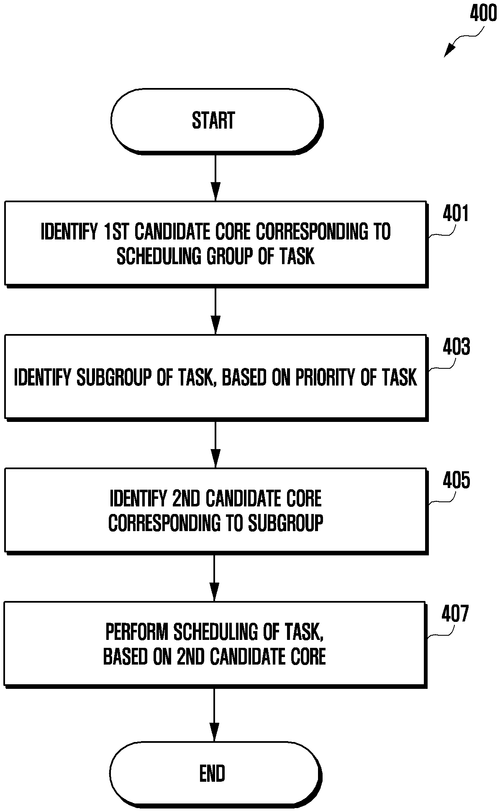
In a recent patent filed by Samsung Electronics Co., Ltd., they introduce an exciting concept that could revolutionize task scheduling in electronic devices. The patent describes an apparatus and a method for scheduling tasks in an electronic device with a heterogeneous multi-processor. This innovative technology utilizes a memory and a processor that is connected to the memory and consists of multiple heterogeneous cores. When a task needs to be scheduled, the processor is designed to identify the appropriate scheduling group from a range of predefined scheduling groups. Based on this identification and the priority of the task, the processor then performs the scheduling for that particular task. While the patent outlines a promising solution for efficient task scheduling, it is important to note that a patent alone does not guarantee the development of a marketable product. Many factors, such as feasibility, practicality, and market demand, come into play in determining if and when an invention will make its way into our devices. Samsung's competitors, such as Apple and Qualcomm, have been actively expanding the capabilities of their processors as well. The incorporation of a heterogeneous multi-processor in electronic devices could potentially enhance performance and optimize power consumption. For example, it could allow for smoother multitasking on smartphones or enable more efficient data processing in IoT devices. As we eagerly await further updates from Samsung, we can't help but wonder: How would you envision this technology being used in your everyday life? Would you welcome this innovation in your smartphone or other electronic devices? Let us know in the comments below.
An apparatus and a method for scheduling a task in an electronic device including a heterogeneous multi-processor are provided. The electronic device includes a memory and a processor operatively connected to the memory and including a plurality of heterogeneous cores. The processor may be configured to identify, when a task to be scheduled occurs, a scheduling group having the task among a plurality of predefined scheduling groups, and to perform scheduling for the task, based on the identified scheduling group having the task and a priority of the task.
US Patent 11768702
Samsung Electronics Co., Ltd.
Neural Network Apparatus Generates Output Values Based on Reuse of Input Feature Map
What is this invention?
Method and apparatus for processing convolution operation in neural network
A neural network with great finesse,
Found a way to reuse input stress.
The kernel and map combined,
Accumulated output values aligned,
So the convolution was done with success!
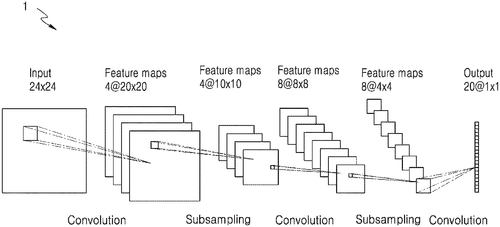
In a recent patent application by Samsung Electronics Co., Ltd., a new method of performing a convolution operation in a neural network apparatus has been described. This innovative method focuses on reusing the input feature map to generate output values and ultimately create an output feature map. Convolution operations are at the core of deep learning algorithms and are pivotal in tasks such as image recognition and natural language processing. With this patent, Samsung aims to improve the efficiency and effectiveness of these convolution operations. While the patent provides a detailed description of the method, it is important to note that patent filings do not necessarily mean that the invention will come to fruition as a commercial product. Samsung faces tough competition in the field of neural network apparatuses, with companies like Google and NVIDIA already offering their own advanced solutions. If this invention does become a reality, it could potentially revolutionize the capabilities of deep learning algorithms. Faster and more efficient convolution operations could lead to significant improvements in various areas, such as self-driving cars, medical diagnoses, and voice assistants. The question remains: Will Samsung be able to successfully implement this method and bring it to market? What are your thoughts on the potential of more efficient convolution operations in the field of deep learning? Share your insights in the comments below.
The invention provides a method of performing a convolution operation between a kernel and an input feature map based on reuse of the input feature map. The neural network apparatus generates output values of an operation between each of weights of the kernel and an input feature map, and generates an output feature map by accumulating the output values at positions in the output feature map that are set based on positions of the weights in the kernel.
US Patent 11769037